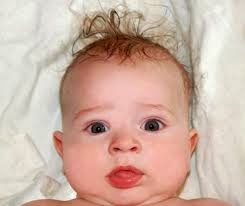So far, baldness is believed to be a disorder that affects only adults. Various types of baldness, including androgenic alopecia and alopecia areata, as well as the more severe versions of it: alopecia totalis and alopecia universalis, are usually found on adult men and adult women. However, baldness is, in fact, can also be suffered by children. The factors that cause baldness on children can be the same with those that cause baldness on adults and can also be different from the latter. If you are asking "why my child has hair loss," you should get the factor that causes your child's baldness clearly identified so that you can find out why your child is bald and how to get your child's baldness perfectly treated. The following are several factors that may cause baldness on children
Alopecia Areata
Alopecia areata is a condition where the autoimmune system of your child's body starts to malfunction. This malfunctioning will cause the system to start attacking your hair. This problem will eventually trigger the emergency of patchy baldness on several parts of your child's head. When the problem becomes severe, alopecia totalis or a condition where his/her head loses all of its hairs, may occur. If the problem doesn't receive proper treatment that can effectively overcome it, alopecia universalis, the most severe version of alopecia areata, may occur. Alopecia areata can also be suffered by adults and its symptoms on children are the same with those on adults.
Alopecia areata is a condition where the autoimmune system of your child's body starts to malfunction. This malfunctioning will cause the system to start attacking your hair. This problem will eventually trigger the emergency of patchy baldness on several parts of your child's head. When the problem becomes severe, alopecia totalis or a condition where his/her head loses all of its hairs, may occur. If the problem doesn't receive proper treatment that can effectively overcome it, alopecia universalis, the most severe version of alopecia areata, may occur. Alopecia areata can also be suffered by adults and its symptoms on children are the same with those on adults.
Tinea Capitis
Tinea capitis is a species of parasitic ringworm that may grow on parts of your child's body. When this ringworm grows on parts where hair grows, such as his/her scalp, eyelashes and eyebrows, those parts may lose their hair. Tinea capitis infection can be contagious. Therefore, if your child suffers such infection, you should get him/her treated before the infection affects other children who play with him/her.
Tinea capitis is a species of parasitic ringworm that may grow on parts of your child's body. When this ringworm grows on parts where hair grows, such as his/her scalp, eyelashes and eyebrows, those parts may lose their hair. Tinea capitis infection can be contagious. Therefore, if your child suffers such infection, you should get him/her treated before the infection affects other children who play with him/her.
Telogen Effluvium
Telogen effluvium is the interruption of the hair life cycle. This disorder may be triggered by various factors, such as extreme fever, vitamin A overdose and emotional stress. When this disorder occurs, partial or complete baldness may occur after a few weeks. In order to identify this disorder, clinical diagnosis is required. Therefore, bring your child to a doctor to figure out whether telogen effluvium has caused his/her baldness.
Telogen effluvium is the interruption of the hair life cycle. This disorder may be triggered by various factors, such as extreme fever, vitamin A overdose and emotional stress. When this disorder occurs, partial or complete baldness may occur after a few weeks. In order to identify this disorder, clinical diagnosis is required. Therefore, bring your child to a doctor to figure out whether telogen effluvium has caused his/her baldness.
Hair loss on children is a problem that occurs as normally as hair loss on adults does. By undergoing thorough diagnosis, you can identify the cause of your child's baldness with no trouble.
.jpg)
.jpg)
.jpg)


.jpg)
.jpg)
.jpg)
.jpg)


.jpg)
.jpg)



.jpg)













.jpg)
